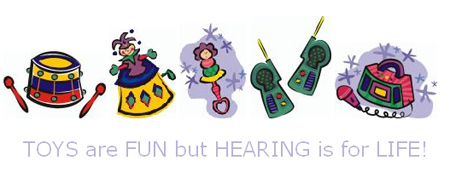Hearing experts have warned that regulations that govern the noise levels in toys are not rigid enough and could possibly allow potentially dangerous toys to be sold in the market.
In fact, the Canadian Association of Speech-Language Pathologists and Audiologists have urged the federal government to amend its legislation and lower the maximum noise levels allowed in toys.
Currently, the federal Hazardous Products Act allows toys to be as loud as 100 decibels. However, the Canadian Association of Speech-Language Pathologists and Audiologists says that is too high.
According to Linda Rammage, association president, “We are concerned that some toys have the potential to harm hearing and can lead to serious communication problems. Noise-induced hearing loss is permanent but preventable. The 100-decibel level needs to be re-examined and a lower level should be set as the standard.â€
The group also added that the legislation does not take into account how closely children may hold a toy to their ears and how sensitive a child’s hearing is to noise.
The International Standards Organization limits noise levels in toys to 85 decibels, while the World Health organization sets the limit at 75 decibels.
Rammage also warned that a toy is classified to be too loud if the user has the raise their voice to be heard above the level of the toy. She also noted that toys can be far louder when held next to the ear than at arm’s length – the standard applied to Canadian legislation.
The group wants the federal government to include noise as part of a promised review of product safety standards.
“Noise levels are a crucial element to toy safety and the hearing health of our children,” said Rammage.
She recommended toy-buyers follow some basic guidelines when purchasing toys with a sound element:

